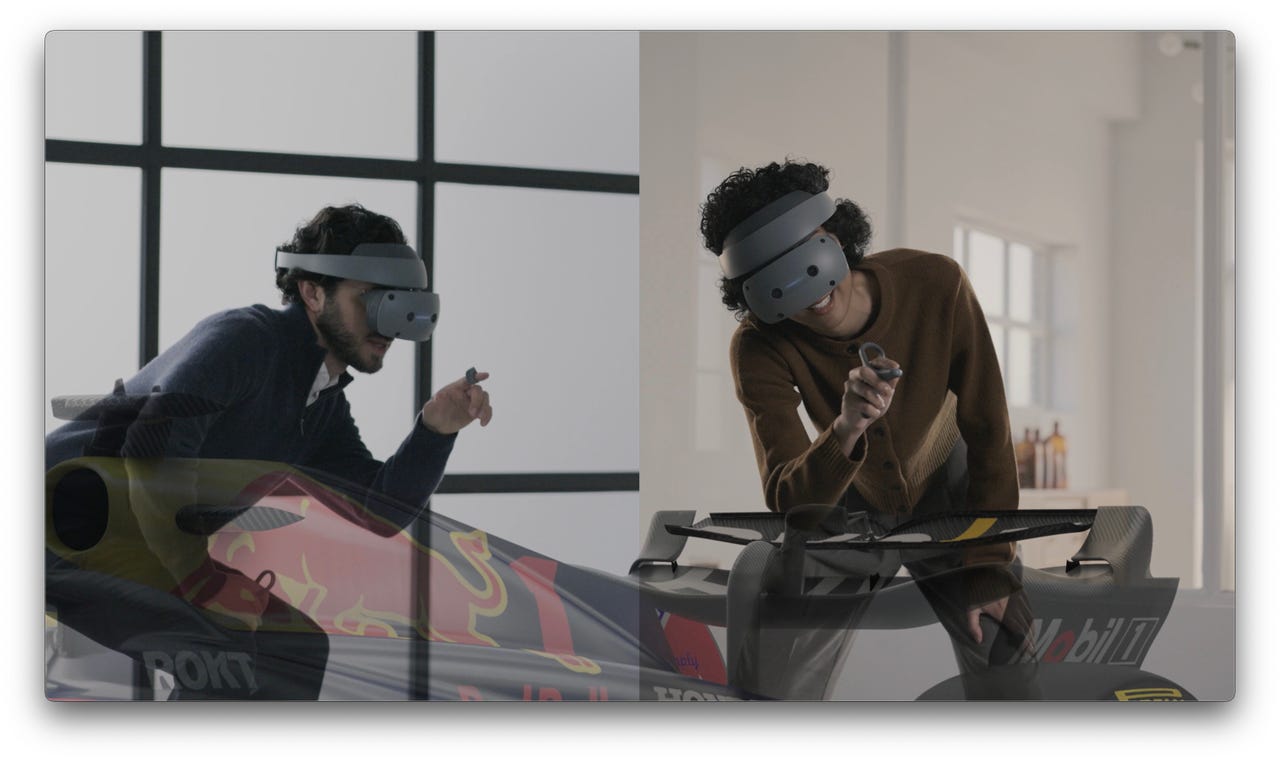
































Despite what you've been reading for the past few months, Meta and Apple are not the only players in the mixed reality/AR/VR world. Microsoft has been refining HoloLens for years, and while it's not a mass-market device, it does have enterprise uses. Sony has had its PlayStation VR since 2016, and introduced its second generation in early 2023.
Also: CES 2024: What's next in tech
Let's talk a little more about Sony. According to IDC, Sony held 27.1% of the worldwide AR/VR headset market at the end of Q2 2023. Meta (i.e., Facebook) was in the top slot, with just over 50% market share.
sorts through the wave of CES news and announcements to identify innovations that will make the most impact on professionals. Learn about the newest products and trends that transform the future of work and life.
Read nowSony's active role in the AR/VR headset business becomes particularly interesting due to its joint announcement with Siemens, coming out of CES 2024 today. The 176-year-old Siemens is a leader in industrial automation, and also has businesses in health, rail, energy, and manufacturing.
I'm intrigued by Siemens' focus on what it calls the industrial metaverse. According to Siemens CEO Roland Busch, "This will empower customers to accelerate innovation, enhance sustainability, and adopt new technologies faster and at scale, leading to a profound transformation of entire industries and our everyday lives. Together with our customers and partners, Siemens is proud to announce new products that will bring the industrial metaverse a step closer to all of us."
Another interesting phrase Siemens has been using is immersive engineering. The idea is that engineering, design, and content creation can be done inside a 3D environment using a toolkit called the Siemens Xcelerator portfolio.
Siemens offers a product called NX Immersive Designer. This tool is designed to "seamlessly connect the real and digital worlds."
Essentially, users can create a digital twin, a version of a real-world system modeled and simulated in the virtual world. Digital twins replicate physical entities with accurate virtual models, helping engineers simulate performance testing and make predictions about points of failure.
The virtual nature of the twin allows many more variations and usages compared to the cost and risk of building a single physical prototype. Not only can the digital twinning process reduce cost, it can substantially reduce time to market while increasing the reliability and performance of the entity being modeled.
Also: The best VR headsets right now (and they're not just from Meta)
I see real potential in how the NX Immersive Designer solution has been used by Sony's engineers to design their next-generation mixed-reality headset, which is also being announced at CES today.
In a curious announcement for a company so focused on branding, Sony is disclosing the development of a spatial content creation system, including a new mixed-reality head-mounted display. What's curious is that Sony has yet to give this product a name.
Even so, the specs make it a powerhouse. It's driven by 4K OLED displays and includes six cameras and sensors, which make the see-through function possible. I'm fascinated by the collaboration potential of this offering. Sony says that the device will integrate with third-party 3D creation applications and will support remote, real-time review between locations.
I love the idea of engineers being able to stand around a car and discuss its design, while in the real world, they may well be on separate continents.
Also: Look out, Apple: Qualcomm's new VR chip competes directly with Vision Pro, with much cheaper headsets
Sony's latest headset is based on the hot new Snapdragon XR2+ Gen 2 Platform, which we spotlighted last week. Also part of the Sony spec was this relatively arcane phrase: "displays that offer a wide color gamut that covers up to 96% of DCI-P3."
Let's break that down, because it provides an important insight into the display quality:
Essentially, Sony's still unnamed headset, which they say covers up to 96% of DCI-P3, is capable of producing a wide and vibrant range of colors, nearly matching the standard used in digital cinemas. This makes it particularly appropriate for high-quality video playback, graphic design, and any application where color accuracy and richness are important.
Another differentiating factor over the consumer-grade headsets we've been covering so much is the use of split rendering. In some ways, this harkens back to some of the earlier PCVR headsets, which relied on the power of the PC to do the work. But in this implementation, the split rendering distributes the workload between computers (possibly even in the cloud) and the head-mounted display, enabling the system to create real-time renders of enormously complex 3D models.
Also: The best AR glasses: Pro-level AR and XR headsets available now
As you might imagine with a product that has yet to be named, pricing and availability also have not yet been disclosed. However, Sony and Siemens do say it will be introduced sometime in 2024.
"Siemens is partnering with Sony to enable immersive engineering, a critical building block for the industrial metaverse. Together, we are creating an environment where it will be possible to experience the realities of physics, without the bounds of time to profoundly improve how our customers work and collaborate," said Cedrik Neike, member of the Managing Board of Siemens AG and CEO of Siemens Digital Industries.
The realities of physics without the bounds of time. That phrase lights my engineer's imagination on fire. I can't wait to see what this partnership produces.
You can follow my day-to-day project updates on social media. Be sure to subscribe to my weekly update newsletter on Substack, and follow me on Twitter at @DavidGewirtz, on Facebook at Facebook.com/DavidGewirtz, on Instagram at Instagram.com/DavidGewirtz, and on YouTube at YouTube.com/DavidGewirtzTV.
 Tags chauds:
technologie
Vêtements portables
AR + VR
Tags chauds:
technologie
Vêtements portables
AR + VR